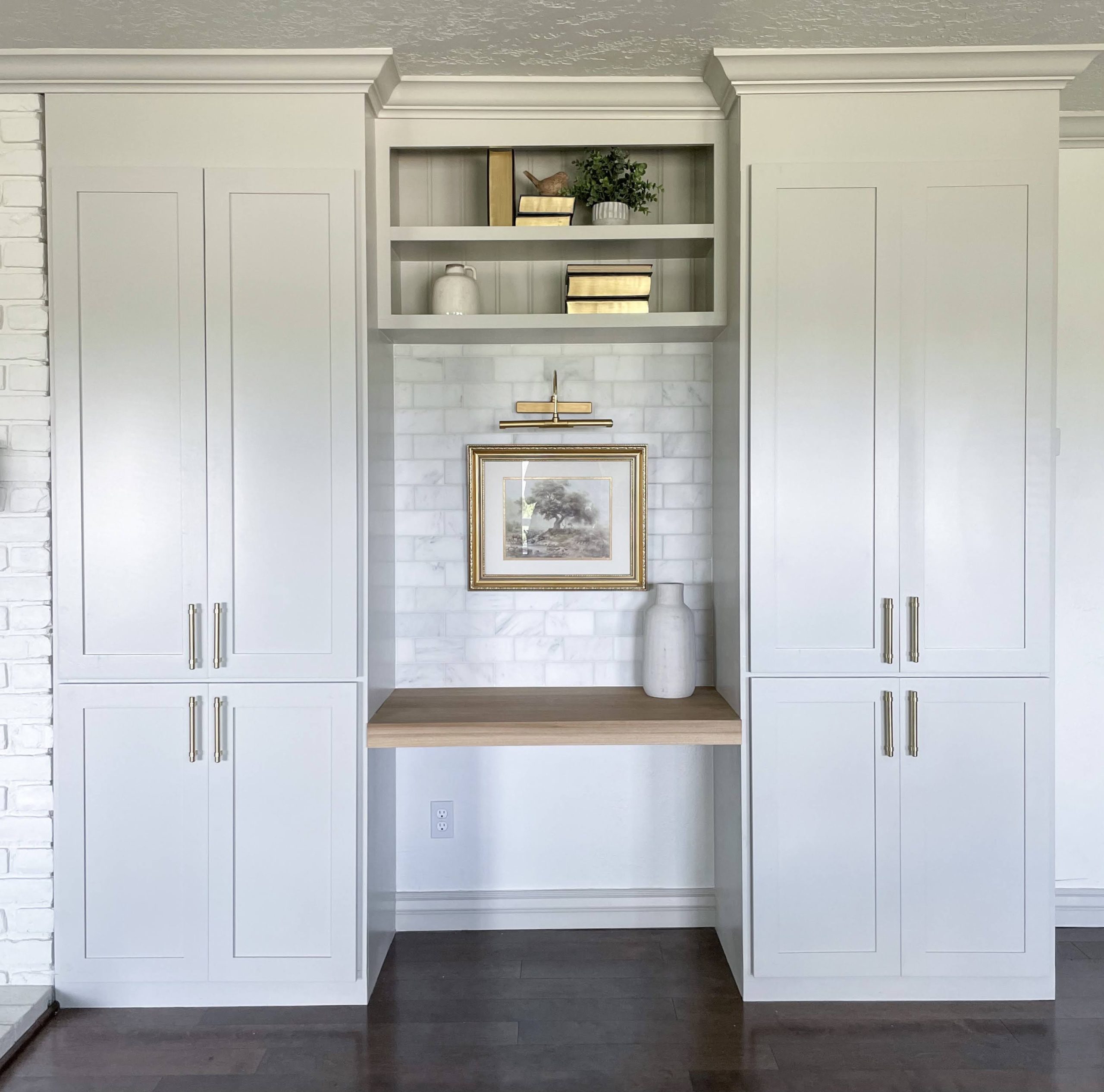“Seriously Crystel, you’re not done yet? Haven’t you drilled enough pocket holes?”
No. There are never enough pocket holes.
How to Build a Desk for Built In Cabinets
The desk turned out beautiful. It’s made from high quality, very straight, poplar wood. I cut my (2) 8 foot boards into (3) 8 inch x 38 1/2 inch pieces. A smaller 2 1/2 inch x 38 1/2 inch piece of poplar was used to give the desk a beefier appearance. It hangs down in the front, giving the illusion that the desk is thicker. So basically, this is my 3,4,5..10th lip? Going forward, I’ll be referring to that piece as “the hangy board”.
I laid the wood out and decided which order and which sides should be the top. I flipped them over and drilled pocket holes on each side of the middle board and on one side of the front board. Use the picture below for reference. I screwed the 3 larger boards together and used wood glue to help give it all an even stronger bond.
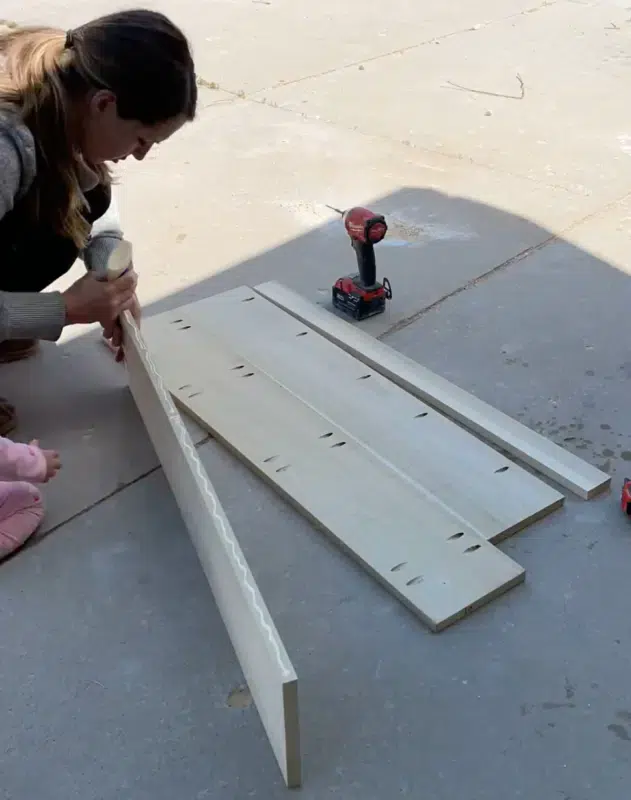
I gave both sides a nice sanding with 100 then 150 grit sandpaper. If a bit of the wood glue had squeezed out of the joints, it mixed with the sawdust as I was sanding and acted as a wood filler. The hangy board was also sanded and then glued and screwed to the rest of the desk.
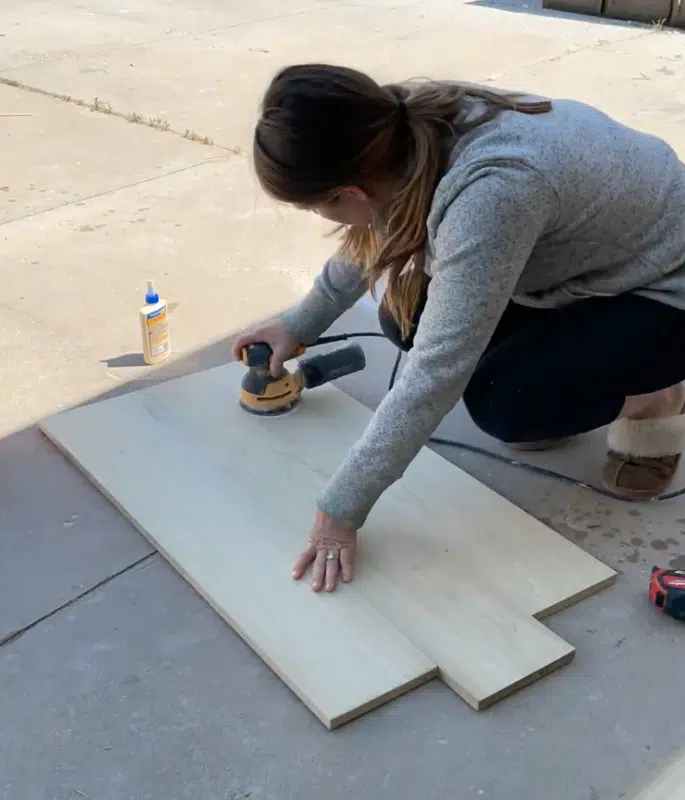
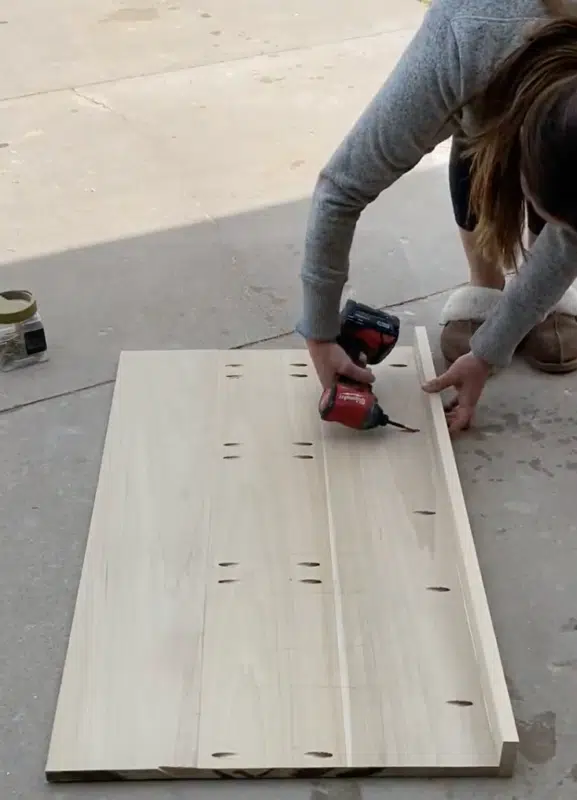
How to Stain the Desk for Built-In Cabinets
I didn’t want the color of my desk to be super dark, so I figured out a great way to stain the desk so the color is more subtle and muted. This method also seals the desk at the same time, so less steps equals YAY. I mixed together about 1/2 cup of Minwax Water Based Polycrylic in Clear Gloss and about 1 tablespoon of Minwax Oil Based Early American stain. After giving it a good stir, I drizzled it onto my desk top, rubbed it into the wood, and wiped off the excess.
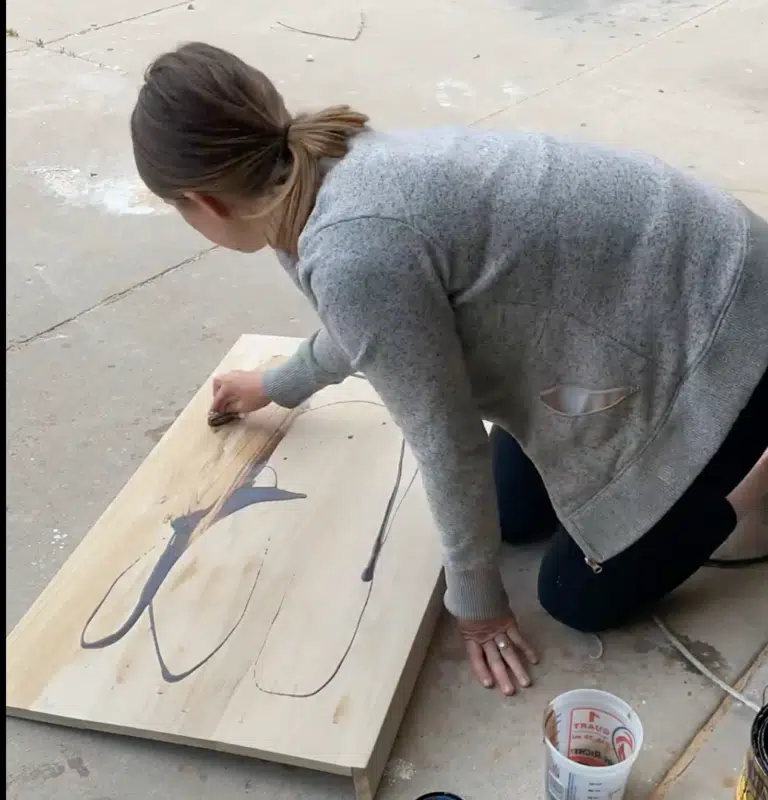
But you know how they say hindsight is 20/20? Well, it’s true. This method is fantastic, but since my girls have had all the fun they can have with tape and markers on that desk, I’m wishing I would have given it an additional 2-3 coats of just the polycrylic. From here on out, I’m ALWAYS going to add 2-3 coats of polycrylic for stained horizontal surfaces. Mostly because I’m a girl who is getting tired of learning the same lesson more than once.
How to Install the Office Cabinet Desk
A laser level was really helpful for this next part. I could have probably gotten away with a normal level, but my measurements would have had to be super accurate or else all the marbles on my desktop would end up on the floor. I measured 29 inches up from the ground and set my level to that height. 29 inches seemed short to me but I went around the house and measured other tabletops, and most were around 30 inches.
The ledger board you see in the picture was cut down to the width of the space for my desk. It was screwed into the wall studs 3/4 inch below the laser line so that when my desktop sat on top of the ledger, the top of the desk hit the laser line.
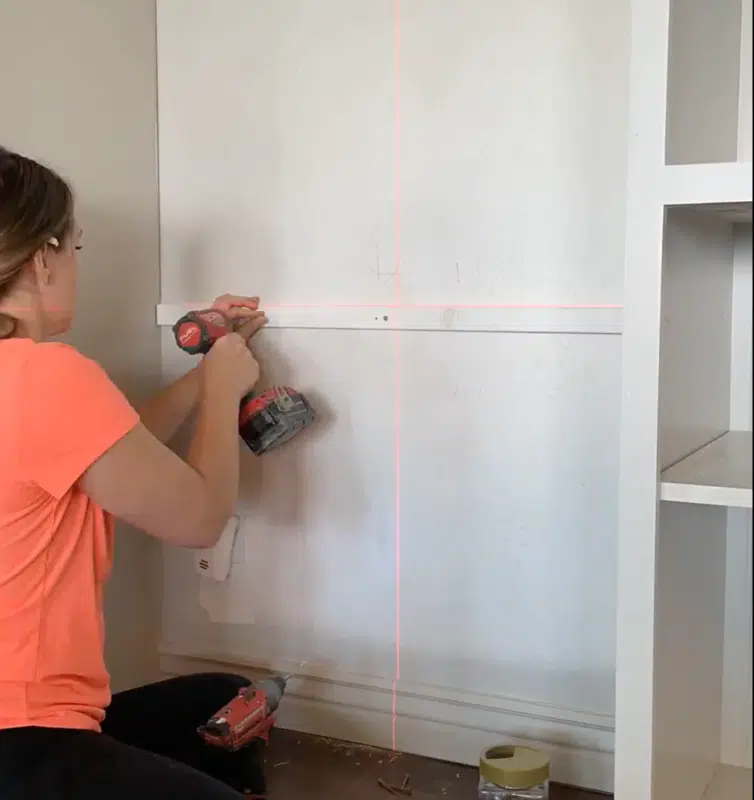
I moved the laser level to the other side of the cabinet wall and set my level to exactly the height where the middle of my desk would sit, which was roughly 28.62 inches from the ground. I predrilled holes on each side of both cabinet walls so I could later screw the desk to the cabinet. This was what secured the desk and will keep it in place so that when my girls stand on top of the desk to dance, it doesn’t pitch forward and ruin their moment. There’s not much wiggle room in the accuracy of the predrilled hole placement since I was only working with a 3/4 inch width desk, but using the laser level for that part helps out a bunch too.
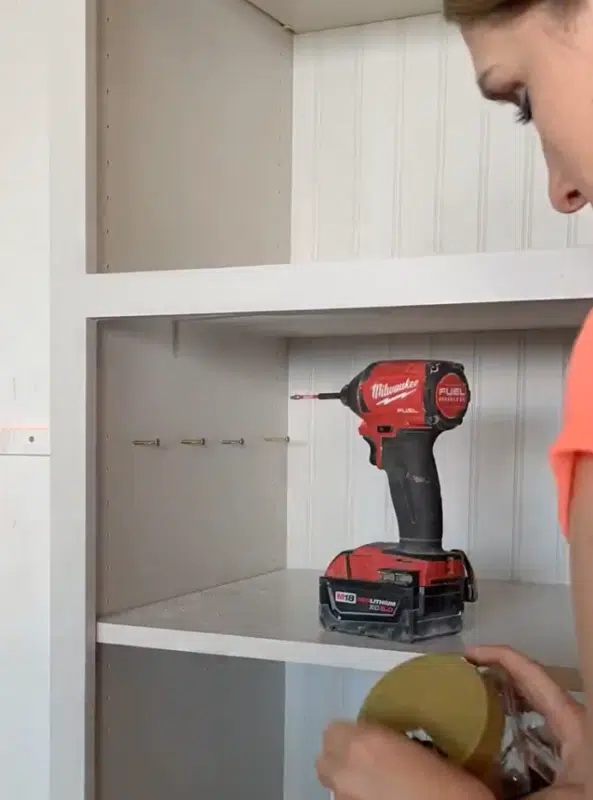
I used a rubber mallet to “encourage” the desk into the space and then screwed the desk to the cabinet. Voila!
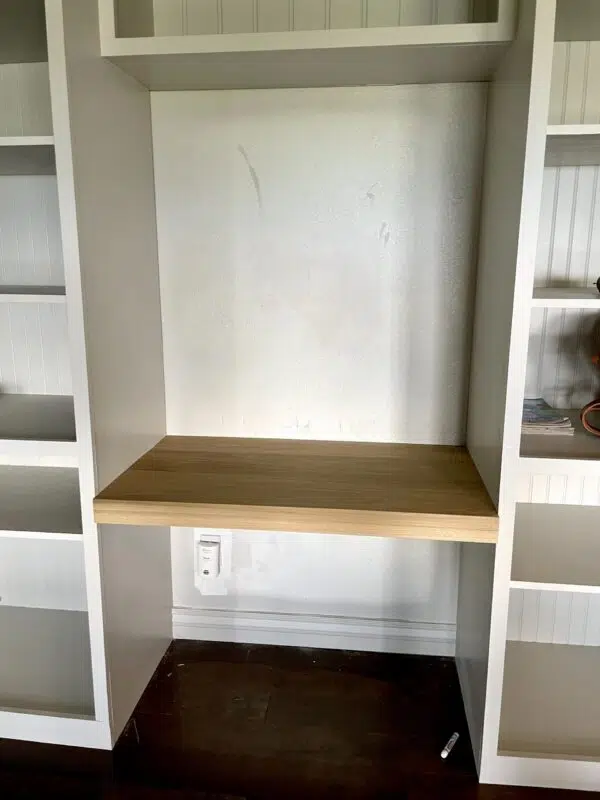
How to Tile the Backsplash
I had some beautiful tile from Riad Tile, and I thought the white and grey color of the tile contrasted perfectly with the Gossamer Veil on my cabinets. Riad Tile is located in Texas but they ship everywhere in the US.
The color and style of this tile is Honed 3×6 Subway Casablanca Carerra Marble.
FYI – the additional tiling step can totally be skipped. Painting the wall would look great too.
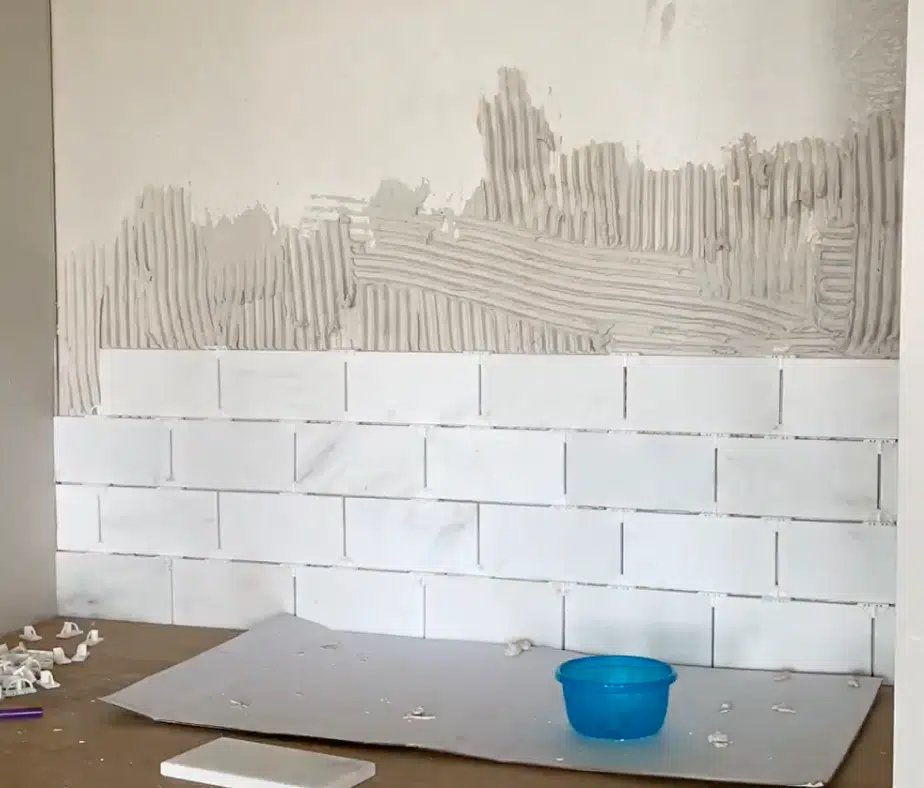
I’ve explained how install tile in previous posts, but I will share some tips that helped me with this project:
- I used 1/8 spacers which you can buy anywhere.
- The coloring variation looks different on every tile, so I laid the tile out on a flat surface so I could decide beforehand how I wanted the pattern to look.
- I didn’t use a level for this project because I did a very thorough job leveling my desk. I started at my desktop and worked my way up.
- This is the thin set I used and I applied it with a notched trowel which allows for airflow and helps with adhesion.
- I cut my end pieces as I went which ensured a more accurate cut.
- Before I applied my grout, I used a screwdriver to dig out any dried thin set that had squeezed out beyond the edge of the tile. Grout won’t set up right if it’s applied over little pieces of dried thin set.
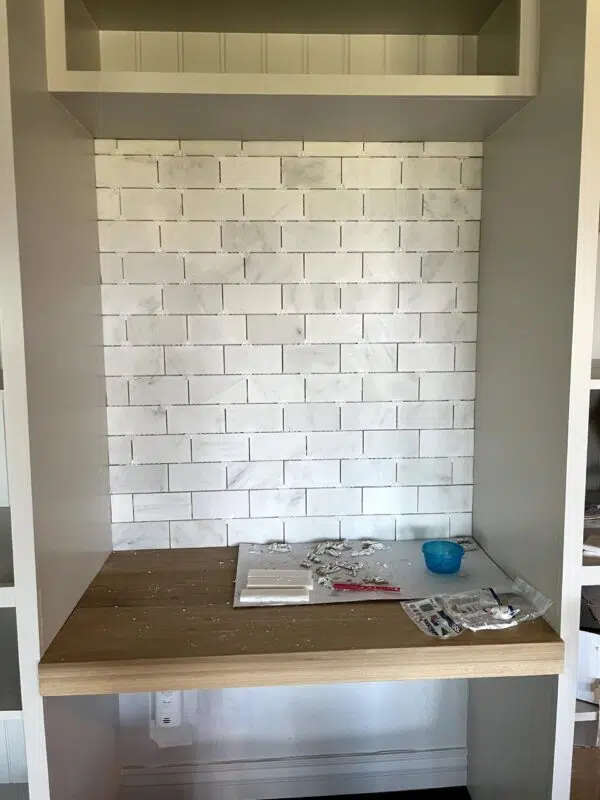
How to Hang the Cabinet Doors
Let’s talk doors. Doors are tricky. Doors can make or break a project. One janky door and everyone knows it’s a DIY job. I decided to outsource the building of the doors through a local cabinet maker, and it was well worth the extra money. When I provided my measurements, I took into account that each door size should include a 1/2 inch overlay.
After priming and painting my doors using my Graco Paint Sprayer, I installed the hardware, and got them hung. The hardware I purchased from Amazon is so pretty.
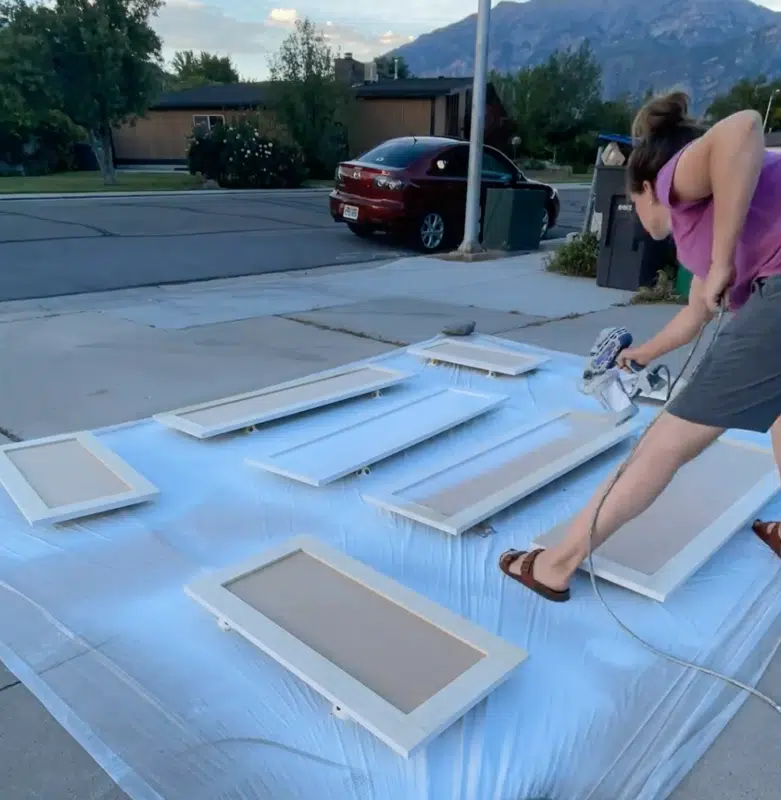
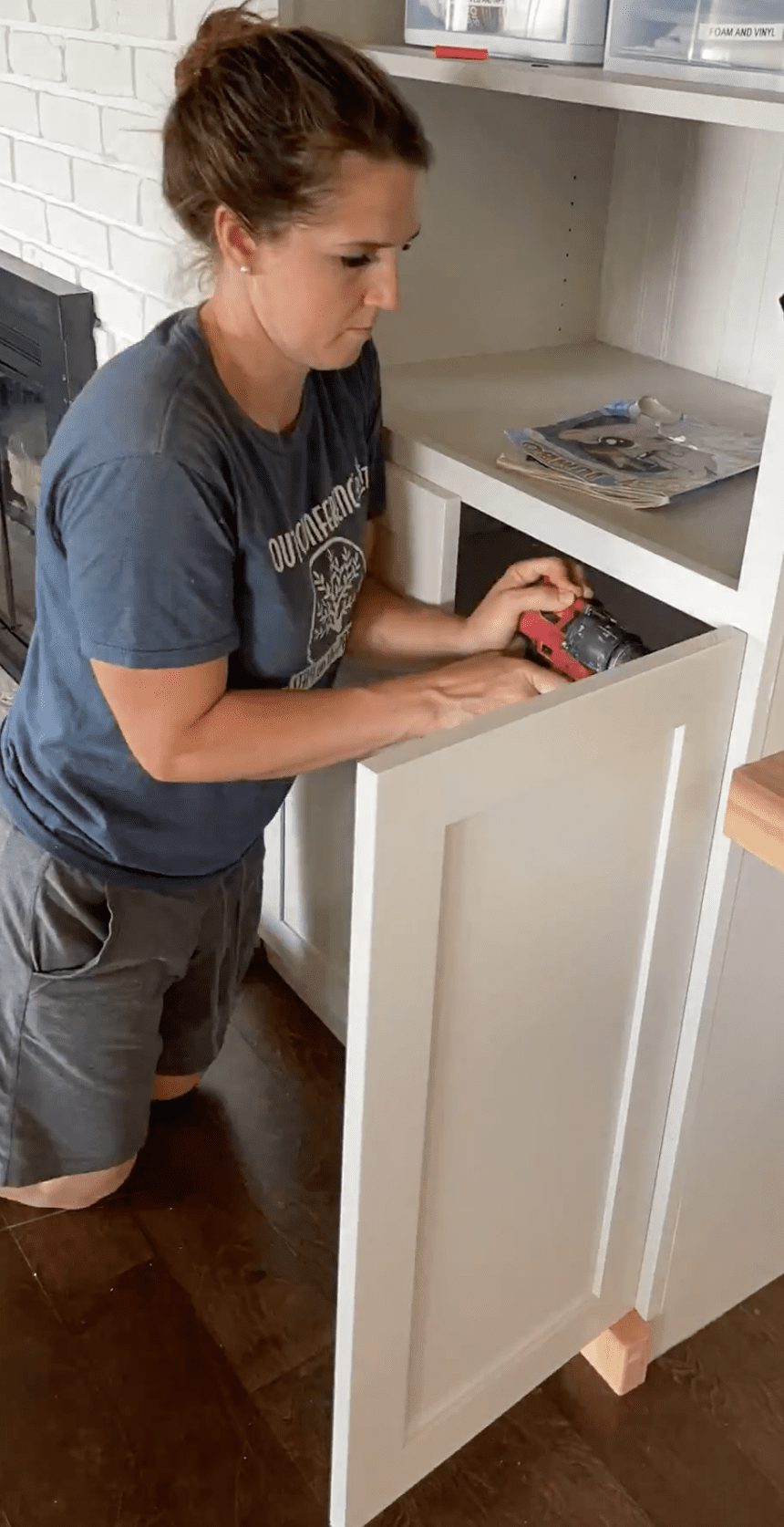
How to Add Cabinet Lighting
Let’s finish strong, guys. Except, this last part requires very little strength. So… let’s just finish.
I bought this picture light from Amazon to install above my desk. It looked a bit copper-y and I wanted it to match my hardware, so I used Rub and Buff to shine it up a bit. The best thing about this light is it required NO electrical work because it’s battery and remote operated.
Finished!
As a reminder, we started here:
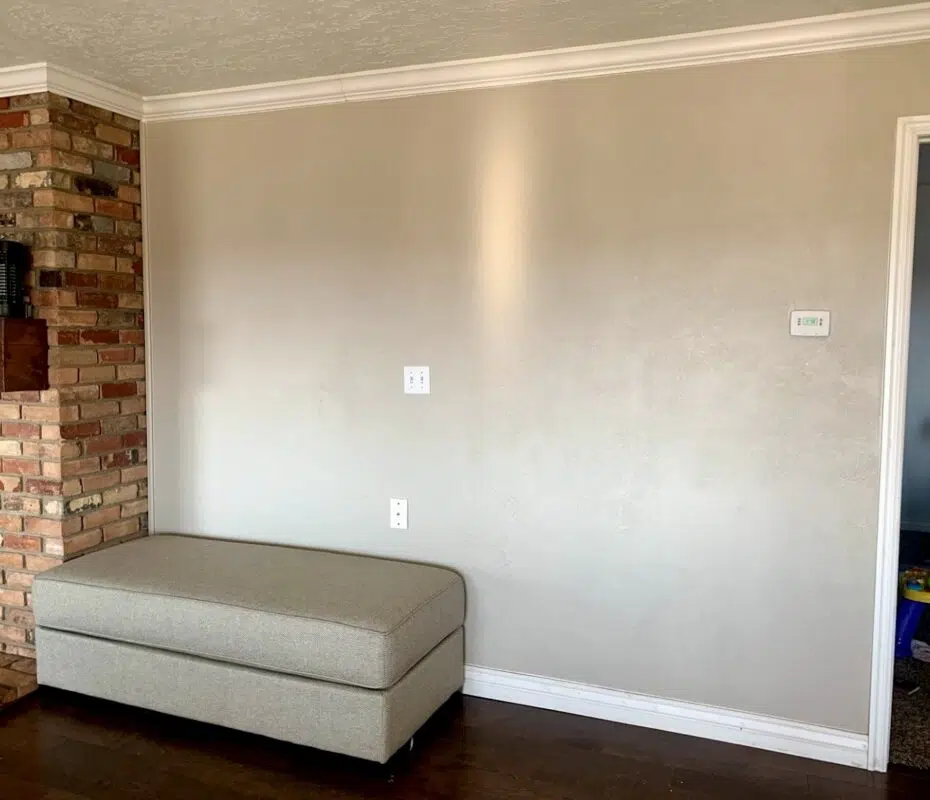
And ended here:
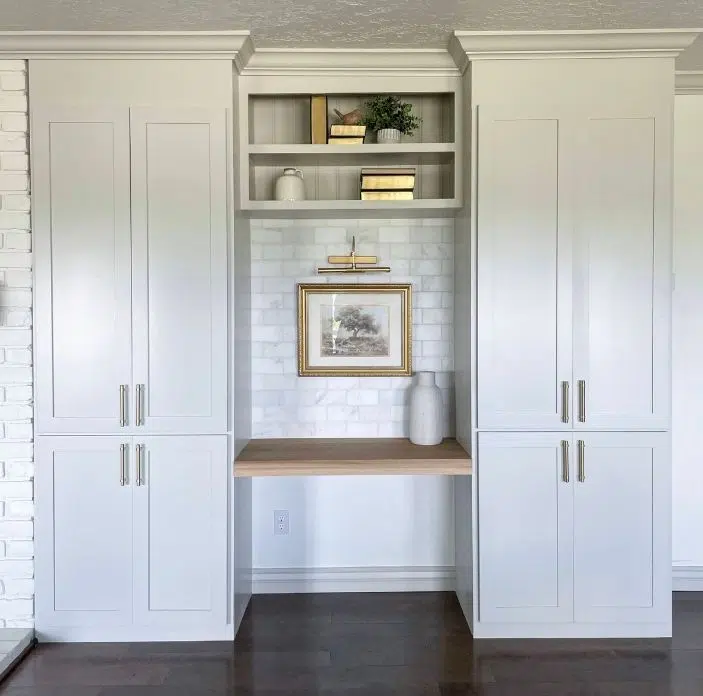
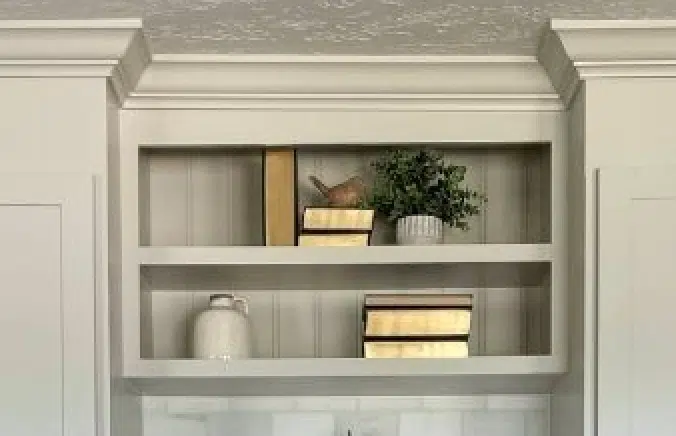
I mean, c’mon. Look at that.
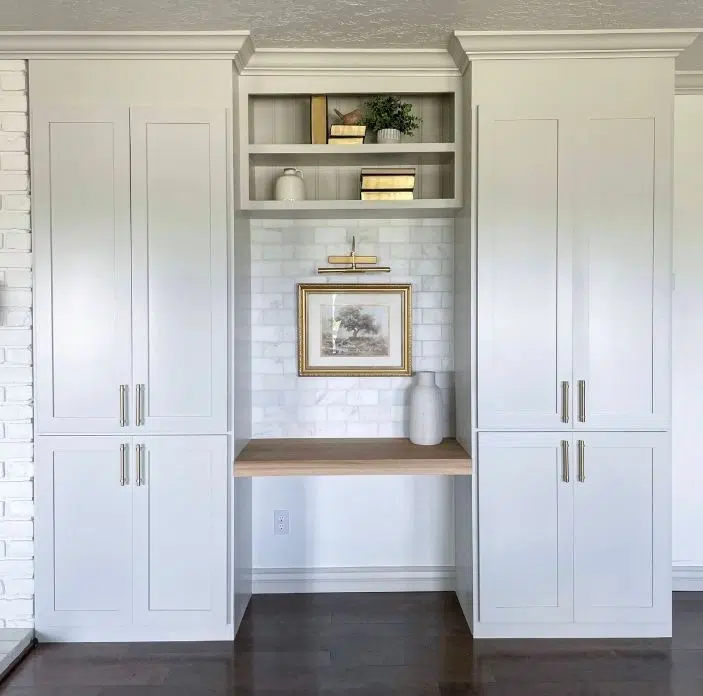
As far as tape holders go, I think it turned out great.
Check out Part 1 of HOW TO Build Office Cabinets to see how to build the boxes and attach the framing.
Check out Part 2 of HOW TO Build Office Cabinets to see how to build the connecting shelf, add additional shelving, and paint the cabinetry.
Feel free to leave a comment if you liked this post or have any questions.
All of my stories for this project can be found in my Office Part 1 and Office Part 2 highlights on my instagram account @crystelmontenegrohome.
